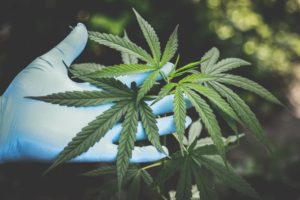The discovery of the Endocannabinoid System (ECS) in the late 20th Century was one of the most important scientific findings in history. Scientists still have a lot to learn about the nuances of the workings of the ECS. They do know that its function is maintaining homeostasis through the regulation and control of our most important body functions. In this article, I will define homeostasis, present the components of the ECS and discuss how cannabis cannabinoids interact with it to relieve the symptoms of so many different medical conditions.
What is Homeostasis?
Homeostasis is defined as any self-regulating process by which biological systems tend to maintain stability while adjusting to conditions that are optimal for survival. To be simply put, maintaining homeostasis assures the continuance of life.
How the Endocannabinoid System Works
Human cells operate at their optimum level within a very narrow range. The function of the ECS is to enable operations that return our body systems to homeostasis when they deviate too far from it. It only activates when and where it is needed. Factors that cause the ECS to stray from homeostasis are chronic diseases or external conditions. This can lead to the development of medical disorders where the ECS attacks the body cells rather than protecting them.
Our brain and immune system are full of cannabinoid receptors, CB1 and CB2, that are stimulated by chemical signals to control the activity and levels of other neurotransmitters. The ECS controls temperature, sleep, learning and memory, appetite, inflammatory and immune responses, reproduction and fertility, and emotional processing. Through rapid feedback, the ECS kicks in to adjust and regulate the activity of any body system which requires it in order to maintain homeostasis. All vertebrates and some insects have an ECS.
These receptors are stimulated by endocannabinoids which are naturally produced molecules that are structurally very similar to molecules in the cannabis plant. The first endocannabinoid, anandamide, was discovered in 1992 by Czech chemist, Lumir Hanus and American pharmacologist, W. A. Devane in Israel. They were members of the Israeli team, led by Dr. Raphael Mechoulam, known as “The Father of Cannabis.” They named it after the Sanskrit word for bliss or joy. This discovery validated the existence of natural cannabinoids in the human brain that bind with cannabinoid receptors throughout the brain and body.
Endocannabinoid Receptors

source: RF._.studio on pexels.com
- CB1 receptors are found predominantly in the brain, lungs, liver, kidneys and especially in the central nervous system where they interact with neurons.
- CB2 receptors are found predominantly on immune cells which circulate throughout the brain and body by way of the bloodstream. They can also be found in the spleen and in some bone and liver cells. The only neurons on which they are found are located in the hippocampus and the brainstem. They control our immune function by playing a crucial role in regulating intestinal inflammation and pain in inflammatory bowel conditions.
The function of endocannabinoid receptors, present on the surface of cells, is to transmit the information of conditions from the outside to the inside of cells. This alerts the ECS that measures must be taken to return body systems back to homeostasis.
Endocannabinoids
The two major endocannabinoid molecules are:
- Anandamide
Anandamide is a fatty acid neurotransmitter which impacts pain relief, sleep, memory, appetite and mood. It provides a feeling of well-being and reduces fear and anxiety while increasing the ability to cope with stress. Engaging in rigorous exercise increases the levels of anandamide. - 2-Arachidonoylglycerol (2-AG)
The most abundant endocannabinoid in the body, researchers believe 2-AG plays a role in pain management, immune and circulatory system functions and appetite regulation. Japanese scientists discovered that elevating levels of 2-AG reduces the occurrence of generalized seizures, suggesting the part it plays in controlling neurological conditions that affect motor control. It is present in much higher levels than anandamide in human breast milk, suggesting its purpose is to stimulate a suckling response from infants.
Endocannabinoids are made from fat-like molecules contained in cell membranes. They are produced and used only when they are needed rather than synthesized and stored for later use like many other molecules.
Metabolic Enzymes
The function of metabolic enzymes is to break down the endocannabinoids so that they are used only when needed and are quickly destroyed afterwards.
- Fatty Acid Amide Hydrolase (FAAH) breaks down anandamide
- Monoacylglycerol Lipase (MAGL) breaks down 2-AG.
How Cannabis Cannabinoids Interact with the ECS

source: Aphiwat on pexels.com
THC
THC is known to bind with both CB1 and CB2 receptors in the ECS which explains the big impact it has on both mind and body. Some of just a few of its potential benefits; provides pain relief, reduces inflammation, stimulates appetite, induces sleep, reduces gastric distress and relieves anxiety and depression.
CBD
Less is known about how CBD interacts with the ECS. Researchers believe that CBD binds with CB1 and CB2 receptors in a much different way than does THC. They do know that it is non-psychotropic. Many believe that the function of CBD is to stop endocannabinoids from being broken down by enzymes; CBD inhibits FAAH enzyme leading to an increase in anandamide levels. This may decrease anxiety levels, which relieves symptoms related to anxiety and depression disorders. Another theory is that CBD binds to a yet-to-be-discovered receptor.
Sources:
https://www.leafly.com/news/science-tech/lumir-hanus-discovered-first-endocannabinoid-anandamide
https://www.health.harvard.edu/blog/the-endocannabinoid-system-essential-and-mysterious-202108112569
https://bebrainfit.com/anandamide
https://sensiseeds.com/en/blog/cannabinoid-science-101-what-is-2-arachidonoylglycerol-2-ag/

